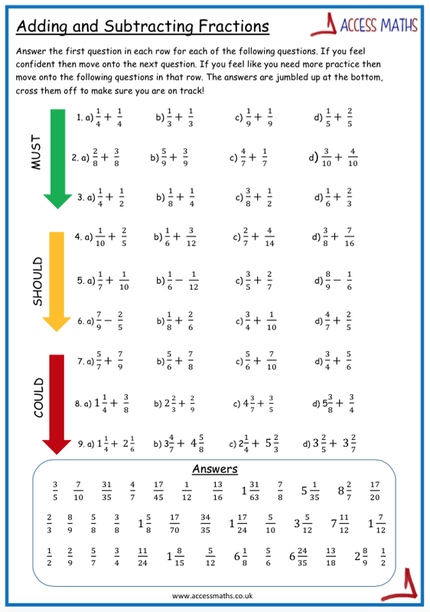Now I can't take all the credit for this one as it was created after a lengthy discussion with Mel from www.justmaths.co.uk @Just_Maths so thanks to Mel also for helping me design this :-)
I've made this worksheet so that each line progresses in difficulty. There are very slight changes moving up in the questions showing the progression of this topic. I hope you like it! :-) Students also have all the answers so there was no need for any hands up! If the answer was't there then it was wrong! (Apart from the one I got wrong that my two 'mistake hunters' found for me) You can download the fractions worksheet here
3 Comments
Anne Santiago
4/10/2019 02:01:26 am
Using fraction worksheets is very helpful when adding or subtracting fractions. It would help the students to familiarized the correct answer. Let me also share my idea on dealing with fractions.
Reply
4/20/2019 01:19:01 am
To solve fraction without a thorough understanding of basic fraction is hard at the beginning. This is so true even in the higher grade levels. Student should understand first how to add, subtract, multiply, and divide fractions. They should have a deep understanding of LCM so that they can decide when to use it or use the butterfly method. They should also have the understanding of equivalent fractions, mixed fraction, and improper fractions. By having a depth understanding, student may find it easy and even fun to deal with fractions.
Reply
Leave a Reply. |
Search for a topic
Categories
All
Archives
May 2018
|
|
Maths Resources @AccessMaths
|
©AccessMaths 2015
|


 RSS Feed
RSS Feed